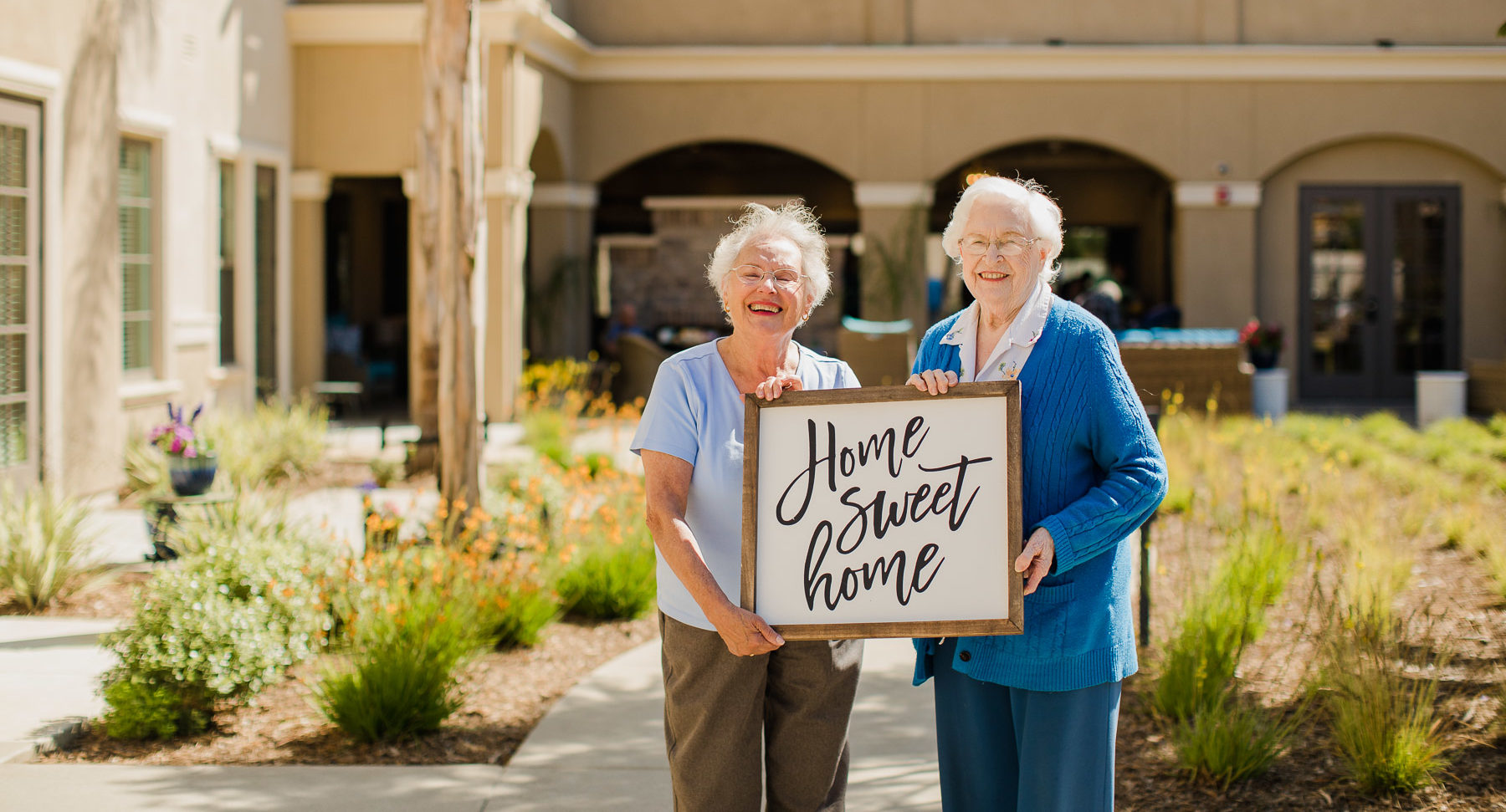Senior living is still the safest option for many families.
The right community combines professional medical care with a full calendar of events and long-lasting relationships.
It can be difficult for families to decide whether senior living or at-home care is best. Especially during the COVID-19 pandemic, families worry about the safety of their loved ones in a community setting.
Senior living communities are able to maintain strict safety protocols while finding alternate ways to encourage fulfilling, meaningful activity and connections.
Learn how to tell if a loved one is in need of the support of a community, what to look for in assisted living, and how to talk to your loved one about moving.
How to Tell if Your Loved One is Struggling with Their Health
Changes in a loved one’s health often occur unexpectedly.
This may happen due to a fall, a health issue that comes on suddenly, or you may even notice signs of memory loss that weren’t there before.
Especially during the holiday season, when there’s more family and activity around your loved one, new symptoms could arise.
To determine if your loved one is having trouble taking care of themselves, observe their activities of daily living (ADLs). These activities include:
- Eating
- Bathing
- Dressing
- Grooming
- Toileting
- Ease of movement
If you notice your loved one having difficulty in any of these areas, they may be in need of extra support. Trouble with movement or using the toilet can lead to dangerous falls.
Watch for Signs of Memory Loss
In addition to the ADLs, you should become aware of the early stages of memory loss.
While there’s no cure for progressive diseases such as Alzheimer’s disease or Lewy body dementia, early diagnosis and certain types of treatment can help preserve quality of life.
Watch for these early signs of dementia:
- Memory loss that disrupts daily life
- Difficulty planning or problem-solving
- Trouble with familiar tasks
- Confusion with time and place
- New issues with speaking or writing
- Poor judgment
- Changes in personality and mood
Whether your loved one lives alone, with their spouse, or with family, you can work together to determine the safest senior living option.
If they have Alzheimer’s or another form of dementia, moving to an assisted living community sooner rather than later is best so they can have constant access to the right level of support.
How to Find the Safest Senior Living Option
The best time to seek help for your loved one is before they are experiencing any health issues. The second-best time is to take action as soon as you notice any symptoms.
Many families hesitated to seek help during the pandemic, because they weren’t sure what the safest option was. For many, it seemed better to keep their loved one at home.
While this decision is understandable, assisted living communities are able to provide fast access to medical care and the latest health guidelines, and they have the staff to perfectly execute these safety guidelines.
Additionally, these communities are able to keep residents safe by limiting visitors and requiring frequent monitoring of staff and resident health.
Tips for Talking to a Loved One about Moving
Discussing assisted living with your loved one can be difficult and emotional. However, the sooner you begin these conversations, the easier it will be for them to transition and feel comfortable.
Including your loved one through the entire process might be helpful for them to feel like they have some control and can voice their concerns.
It will be most helpful for you to have the answers to their concerns, and to reassure your loved one that this option is the safest and most comfortable place for them to be.
Characteristics to look for in an assisted living community:
- A full spectrum of clinical support
- A community that adapts to changing care needs
- Assisted living that also provides memory care
- Medical professionals available 24 hours a day, seven days a week
- A calendar packed with activities and social opportunities
- Option to bring pets or live with spouse
- Excellent dining
- Strict COVID-19 safety protocols
You’ll find these characteristics, as well as many other benefits at The Kensington Redondo Beach.
Explain to your loved one that living alone as they age can bring new risks, and a community will ensure their safety and support while providing fun activities and less responsibility.
The Kensington Redondo Beach offers safe, socially distant activities seven days a week, from morning to the evening.
Also, emphasize that your loved one will be free to simply relax and enjoy their family and favorite activities once they no longer have their daily responsibilities.
How The Kensington Redondo Beach Supports Families
One important aspect of assisted living is the social opportunities for seniors. During the pandemic, senior depression and isolation rose.
The Kensington Redondo Beach is committed to providing the highest levels of safety and security to residents while also prioritizing fun activities and friendships.
At The Kensington, Our Promise is to love and care for your family as we do our own. We are able to care for your loved one no matter the level of support they need, whether they are able to live more independently or are in the late stages of dementia. In this way, we provide true “aging in place.”
Call us today to tell us more about your loved one’s unique care needs, and how The Kensington can best support you.



